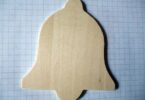Saws are incredible tools that help us curve and slice a wide range of materials to our likings. There are around a hundred different types of saws available based on the type of work you need to do.
Usually the weight of a saw depends on the structure, functionality, and power consumption of the tool. Here we will see how much different types of hand and power saws weigh.
How Much Does a Saw Weigh: Based on Type
1. Rip saws
This is the most common type of saw available and most probably you have one at home too. The lightweight design and sharp teeth allow them to cut wood parallel to the grain.

Multiple variants are available weighing from 1 to 2.5 lbs depending on the size.
2. Crosscut saws
Crosscut saws feature a thick blade with large beveled teeth that make them perfect for rough cutting or trimming branches. They can be used by one or two people and the two-person variation is sometimes known as the “lumberjack saw.”

The weight mostly depends on the size, but it ranges from 4-8 lbs.
3. Bow saws
They are a modern variation of crosscut saw mainly used for making curved cuts and pruning trees. They have fairly long and narrow crosscut blades and are medium in size.

Also known as bow cut saws, these handy tools weigh about 0.6 to 4 lbs
4. Back saws
Commonly known as dovetail saws, back saws are small. With fine teeth that have narrow blades, they are perfect for making exact cuts and dovetail joints. The blade is reinforced with a stiff piece of metal attached to the opposite side of the cutting edge.

Due to their high accuracy and efficiency, back saws are widely popular among woodworkers across the globe. This compact tool weighs around 0.5 – 2 lbs.
5. Japanese saws
Japanese saws are an increasingly popular type of hand saws fitted with a sharp, strong, and narrow blade that can cut materials with minimal effort.
Unlike traditional saws, Japanese saws cut in a pull motion and are used to make smaller and more precise cuts.

There is a wide variation of japanese saws available and the average weight ranges from 5-10 ounces.
6. Coping saws
Small and light, coping saws are used to create coping joints. The blade is secured with the body by tension. These nifty tools are very popular for making precise and curved cuts.

The D-shaped frame provides enough strength to the fine-toothed blade to cut through even some softer metals.
These lightweight saws weigh less than 1 lb.
7. Jab saws/Keyhole saws
Jabs saws, also known as keyhole saws or alligator saws, are designed for rough cutting.
A jab saw is often used to make rough cutting patterns or circles. You will need them for drywall when the cutting area is inaccessible or the wall’s shape doesn’t allow you to use power tools.

The weight ranges from 0.5 lb to 1 lb. while most units weigh less than a pound.
8. Veneer saws
These double-edged saws are designed to cut hardwood veneers, plastics, and laminates. Veneer saws are small in size and offer smooth results over a small work area.

The weight of these tools varies from 0.20 lb to 0.50 lb.
9. Hacksaws
Hacksaws are another one of the most popular variants of handsaws. These are perfect for cutting hard hoses and pipes.
Since they are versatile and lightweight, you can cut a variety of materials, including plastic, wood, and metal.

Depending on the size, the weight ranges from 1 lb to 2 lbs.
10. Pruning saws
Pruning saws are hand saws equipped with a sharp blade for cutting lumber. They can be used for trimming shrubs and tree branches too. In fact, they are specifically designed for garden use.

The long and curved blade makes reaching tough branches and smaller pruning jobs an easy task.
The weight of pruning saws depends on their size, but it ranges from 0.5 lb to 1 lb.
11. Fretsaws
Fretsaws are another common type of handsaws perfect for making better and more precise cuts. These are equipped with thin and sharp blades and an extremely long C-shape frame. They offer more delicate and finer cuts compared to the coping saws.

The weight of all models is not the same. It mostly depends on the size, ranging from 1 lb to 2 lbs.
Types of Power Saws
1. Circular saws
Circular saws are one of the most common types of power tools. They consist of an abrasive circular-shaped blade or disc and are used to cut a variety of materials.
With so many available variants, the weight of circular saws varies from model to model depending on the size.

The compact circular saws weigh around 5 lbs to 8 lbs, depending on the design and construction. A medium-sized circular saw weighs from 8.5 lbs to 15 lbs. On the other hand, the larger models are from 20 lbs to 50 lbs.
2. Miter saws
Miter saws are dedicated power tools to make angled cuts accurately. They are similar to circular saws, But come with a miter box to make the cuts more accurate.
The mini miter saws weigh around 10 lbs to 20 lbs. The medium and large miter saws weigh around 20 lbs to 45 lbs.

But it depends on the size, for instance, a 7-¼” model may weigh around 20 lbs while a 10” one may weigh around 30 lbs. In fact, the weight can be up to 45 lbs for a 12” unit.
3. Table saws
Table saws feature circular rotating blades emerging upwards from the table to cut the material. This aspect makes the saw a bit dangerous to work with as you need to push the materials onto its blade.

Table saws are heavy and depending on the variants, the weight ranges from 40 – 100+ lbs.
4. Chainsaws
Chainsaws operate with a linked chain that rotates around a piece of steel. Extremely versatile and powerful, they are most probably the most common power saws available across the globe.

There is a wide variety of chainsaws available, weighing from 6 lbs to 15 lbs.
5. Jig Saws
Jigsaws are handheld power tools for cutting curves and shapes in materials like metals, plastics, boards, and wood.
They are specifically designed to cut curves and other non-straight lines. You can make straight cuts with a jigsaw as well. Most modern jigsaws are fitted with a downward pointing T-shank blade with finer teeth.

The weight varies from model to model, ranging from 3 lbs to 8 lbs.
6. Plunge saws
Plunge saws, also known as track saws, are power tools designed for making straight and smooth cuts. They look like a combination of a table saw and a circular saw. Track saws are used to make straight cuts with minimal effort.

The weight of these tools ranges from 8-15 lbs but some models can be heavier.
7. Tile saws
Wet saws are powerful cutting tools designed to cut porcelain tiles, ceramic, stones, marbles, and other similar materials. Most of them require that you apply a generous amount of water or lube to protect the material from cracking.

The weight of the tile cutting tools mostly depends on the configuration. The average weight is from 40 lbs to 100 lbs.
8. Reciprocating saws
Reciprocating saws are mainly designed to perform demolition works. They use a small, sharp blade in a back and forth motion to cut through metal or wood. They are portable and offer a wide range of functions.

Their weight ranges from 5 lbs to 20 lbs.
9. Scroll saws
Scroll saws are designed for making complex curved cuts. They are extremely accurate stationary saws that come with extremely fine blades and mainly used for intricate and precise work such as patterns, spiral lines, and scrolls.

The weight of scroll saws ranges from 20-60 lbs.
10. Bridge saws
Bridge saws are highly powerful cutting tools designed to cut tiles, bricks, stones, and other heavy materials.

The tools are larger in size and heavier in weight compared to most saw types. The weight of these heavy-duty cutting tools ranges from 100 lbs to all the way up to 4000 lbs.
11. Pole saws
Pole saws are small but highly effective power tools for cutting small branches of trees, trimming, cutting shrubs, and many more.

They are basically a chainsaw equipped with a telescopic handle. The weight of these power tools ranges from 15 lbs to 25 lbs.








